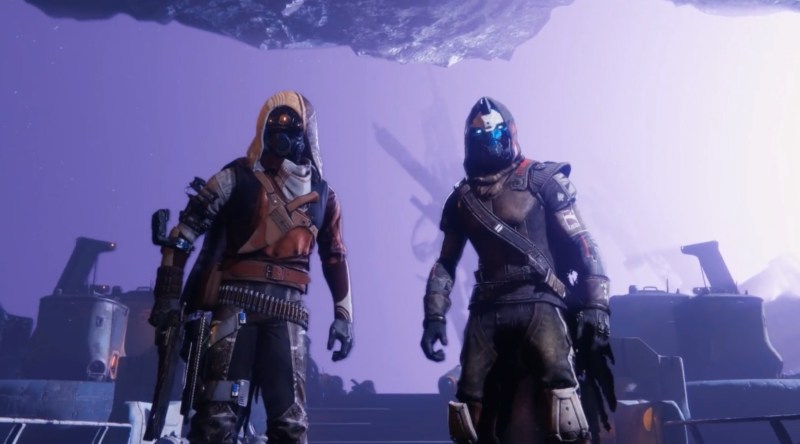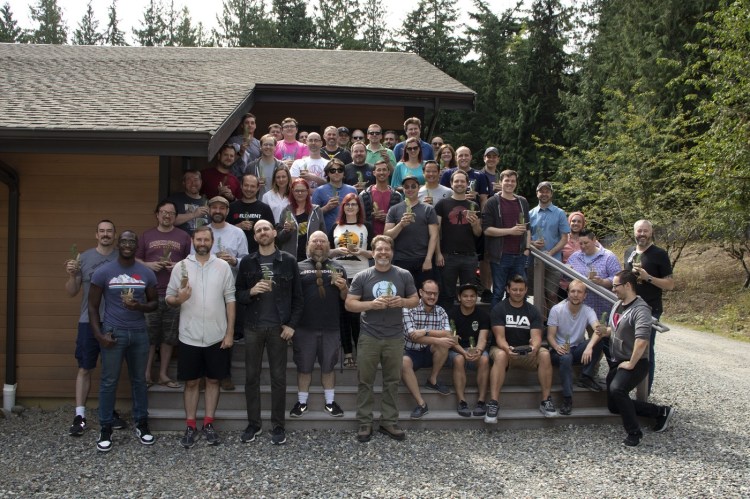“With the goal of ProbablyMonsters of build new triple-A studios, I really wanted to create an environment of collaboration, one where the people felt like their, their career was predictable, it was stable,” Ryan said.
ProbablyMonsters team

Above: Probably Monsters includes Cauldron Studios and Firewalk Studios
ProbablyMonsters’s team includes Lonnye Bower, chief operating officer and an engineering leader who was formerly worldwide technical lead at Microsoft. Fiscal management and strategic planning expertise is provided by Douglas Kikendall, chief financial officer, and formerly CFO at TheTVDB.com and Oak Harbor Capital.
Human resources and recruiting is overseen by Shannon Armstrong, chief people officer, formerly a senior recruiting manager at Amazon.
Firewalk Studios’s head is Tony Hsu, previously senior vice president and general manager of the Destiny Business Unit at Activision Publishing. Hsu is a champion of new gaming IP and has extensive gaming and strategy experience including the massive launches of Destiny and Call of Duty: Black Ops.
June 5th: The AI Audit in NYC
Join us next week in NYC to engage with top executive leaders, delving into strategies for auditing AI models to ensure fairness, optimal performance, and ethical compliance across diverse organizations. Secure your attendance for this exclusive invite-only event.
Firewalk’s game director is Ryan Ellis, formerly the creative director at Bungie and lead artist at Oddworld Inhabitants.
Ryan said the company formed separate studios, rather than one with separate teams, to simplify the businesses.
“Letting those cultures grow is a lot easier in separate companies,” he said. “It’s also as we develop their games and pick, potentially pick different partners.”
Those studios can control their own fates and make decisions that are best for their particular team or game.
As for triple-A itself, Ryan said that is where the teams have experience and can create the best outcomes.
“Triple-A is really about long-term stability, building the business plan around that kind of game,” Ryan said. “And building triple-A studios first was really about getting something that we do really well as a leadership team.”
As for team diversity, Ryan said the company has a good start.
“You to include enough diversity in the conversation, to learn to be inclusive. But that has to be a continual loop. Meaning you need to build an environment and handle an environment where people feel respected and trusted and you can listen to them and understand and educate yourself over time as a business and as individuals about how to make people feel empowered and listen to them.”

Above: Destiny 2: Forsaken is Bungie’s latest big game.
Cauldron Studios is headed by Dave Matthews, who has over 20 years of experience managing triple-A teams while helping build franchises like God of War and Myst. Matthews was formerly lead character artist at Sony Computer Entertainment of America and art director at Bungie and WB Games.
Game director for Cauldron Studios is CJ Cowan, who was previously the story lead for Destiny’s House of Wolves and Taken King releases and Bungie’s director of cinematics for the bulk of their Halo titles.
Ryan said that ProbablyMonsters is committed to building a positive creative culture where game developers can thrive while creating and shipping original triple-A games.
Ryan said he wants to unite, guide, and empower talented game developers in a stable and predictable business environment. He wants to minimize painful transitions for creative teams, avoiding things like the wrenching spinoff of Bungie from Microsoft as well as its subsequent parting with Destiny publisher Activision. In those transitions, employees had to make some life-changing bets on where to work.
For the opening round investors, Ryan didn’t go to a lot of famous venture capital firms who are known for seeking big paydays after funding a hot company. He liked Dallas Cowboys owner Jones as an investor because of his interest in building teams and running them. Jones has also been interested in esports investments.
“I’ve always been a big fan of intrinsic alignment,” said Ryan. “We picked people who were an additive part of the conversation.”
Ryan said the teams continue to expand and hire new developers, and they’re also working with extended teams and vendors around the world.
As for monetization, Ryan said the company would be flexible.
“The two things that we really look out for is keeping the conversation going with people who are watching the industry, from a business analyst view, and marketing and market segmentation planning, but then also looking at the impacts of what that means, from how people like to participate in the game, how they like to consume, and how they like to pay for it,” Ryan said. “And keeping the team understanding where they have flexibility, or where they have to design to be ready for a pivot.”
He added, “You can’t over-index on exactly how things are today, because we are not launching today. And even realizing that, the business model on the day of launch may have to evolve really quickly. One of our strengths is being efficient with creating the ideas and building the team and building partnerships that allow us to finish yet but hopefully keep our budgets reasonable and keep our market position so that if we do have to flex drastically on how we monetize the game, then we can.”


